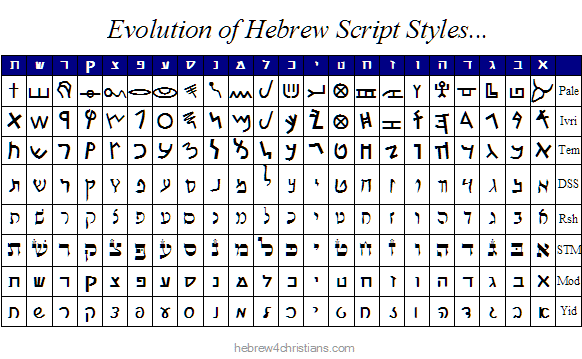The Letters of Torah
What do we make of the pre-Babylonian Hebrew Script?

Recently I read about how the largest-ever collection of coins from Bar-Kokhba revolt were recently found in the Judean hills. What is interesting about this -- from a Hebrew langauge perspective -- is that these coins are embossed with an earlier form of Hebrew script that predates the Second Temple period. This script, sometimes called ketav Ivri (or paleo-Hebrew), was used during the First Temple period, though it was later updated to the "square-style" Assyrian script (ketav Ashurit) by Ezra the Scribe in the 5th century BC (after the Babylonian Exile). It is nearly identical to the Phoenician script. Apparently Simon bar Kokhba emblematically used this older script on coins during the Jewish-Roman Wars of the 2nd century AD for jingoistic purposes. Interestingly enough, the older script can even be seen in modern Israel today. For example, the City of Nahariya (a coastal city in northern Israel) uses this script on its Coat of Arms emblem:
 |
Scholars are uncertain how far back ketav Ivri goes in Jewish history, though it appears to date to at least the 10th century BC. The work of some paleolinguists suggests that an even earlier form of Canaanite cuneiform is actually the basis of ketav Ivri. These Hebrew Word Pictures are regarded as the most ancient form of Hebrew known. Here is a simplified illustration of the progression of the script forms (left-to-right, oldest to newest):
 |
And here is how Genesis 1:1 looks in the three ancient Hebrew scripts:
 |
Do we have a letter-perfect Torah today?
All of this may make you feel somewhat uncertain about the integrity of Hebrew text found in our modern Hebrew Bibles, but there is no genuine reason for concern. In Judaism, two important halachic ("legal") concepts determine the transmission of the Hebrew text: 1) The "majority" of extant manuscripts available, and 2) the Masorah (מַסּוֹרָה), i.e., the long history of Jewish tradition and scribal arts relating to correct textual reading and preservation of the Hebrew Scriptures. (Note that the word "masorah" comes from the phrase masoret ha-brit, the "bond of the covenant" in Ezek. 20:37.) We can rely on the preponderant reading of the ancient texts because they were accepted as authoritative in their time, just as we can rely on the notes of the Masoretic scribes because they were based on intensive study of even earlier manuscripts. Based on these two principles, we have confidence that we possess a near "letter-perfect" Torah, with less than 0.01% of letters being in doubt. Therefore we should have no qualm reciting the blessing, "This is the Torah that Moses placed before the Children of Israel, given by God, through Moses' hand..." said during the Torah reading ceremony at synagogue. According to the Talmud, Ketav Ashurit was a transliteration of Hebrew into a different script style, not a translation into Aramaic. In other words, Hebrew is Hebrew is Hebrew, despite the style of the script used to write it. After the Babylonian Exile, the sages retained the Hebrew Torah in Ktav Ashurit (i.e., the square script) even though the general public conducted their daily business using Aramaic. In addition, we also have the "masorah" and testimony of Yeshua the Messiah, who endorsed Ezra's transliteration of Hebrew down to the "jot and tittle" of the text of His day (Matt. 5:18).
 |
Note: Because this subject seems to be a growing area of interest for people, I am considering adding Ketav Ivri script lessons to the online Hebrew Grammar pages (Unit One). Please let me know if you think this would be helpful to your studies, chaverim.

Learn Hebrew

Audio Tanakh

Hebrew Training
Hebrew for Christians
Copyright © John J. Parsons
All rights reserved.